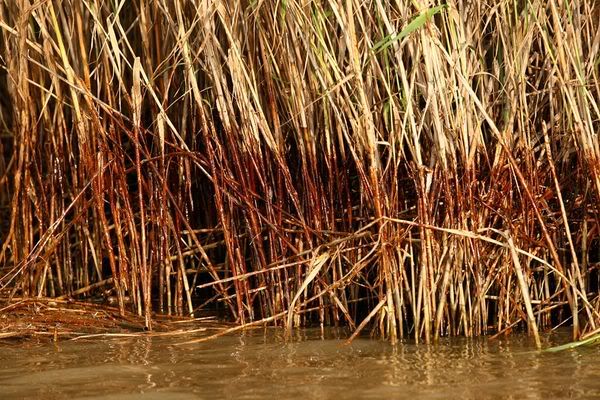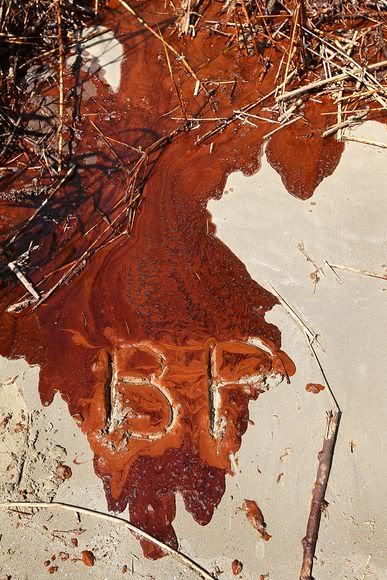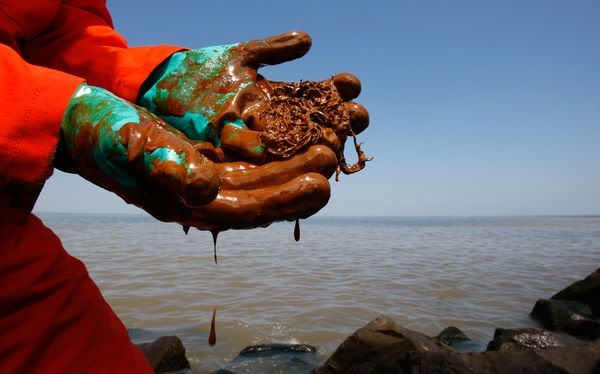Oil-Coated Cane -- Photograph by Gerald Herbert, AP
Oil sticks to cane, a type of plant found in Gulf of Mexico marshes, on the Mississippi River on Tuesday.
In addition to killing seabirds, the oil spill is likely harming other animals less visible to the public, John "Wes" Tunnell, associate director of the Harte Research Institute for Gulf of Mexico Studies at Texas A&M University in Corpus Christi, said by email in early May. Infauna, or small organisms such as clams and tubeworms that live in ocean sediments, are vital food sources for shorebirds and other coastal animals.
After the 1979 Ixtoc oil spill in the Gulf of Mexico, the area's infauna were reduced by up to 90 percent, Tunnell said—a potential reason many bird species left the area in the wake of the nine-month-long spill.
Written in the Sand - Photograph by John Moore, Getty Images
Written by a Greenpeace activist, the letters BP—referring to the company that leased the damaged Deepwater Horizon oil rig—stand out against a pool of oil on a beach at the mouth of the Mississippi River on Monday.
Last week response workers placed an insertion tube inside the destroyed pipe connected to the 5,000-foot-deep (about 1,500-meter-deep) wellhead. About a thousand barrels a day of gas and oil from the leaking wellhead are now being brought to the surface via the tube and burned, according to the joint federal-industry task force charged with managing the spill.
Dripping Oil - Photograph by Hans Deryk, Reuters
Oil drips from the rubber gloves of Greenpeace marine biologist Paul Horsman, who surveyed oil-coated shorelines near the mouth of the Mississippi River in Louisiana this week. When oil gets trapped underground in coastal sediments, it can stay there for decades, according to Gregory Stone, director of Louisiana State University's Coastal Studies Unit. (See: "Gulf Oil Spill a 'Dead Zone in the Making'?")
For instance, on the Mississippi coast—where smaller oil spills have washed ashore in the past—researchers have found oil lingering as deep as 20 feet (about 6 meters), Stone said in early May.
Oil-clogged Marshes - Photograph by Hans Deryk, Reuters
Marine biologist Paul Horsman of Greenpeace tramps through oil-clogged marshes on the east bank of the Mississippi River in Louisiana on Monday. After weeks of staying mostly at sea, the Gulf oil spill is now washing up on the state's coasts—likely a devastating development, scientists say. (See pictures of ten animals at risk due to the Gulf oil spill.)
As the nurseries for much of the sea life in the Gulf of Mexico, coastal marshes are vital to the ecosystem and the U.S. seafood industry, according to Texas Tech University ecotoxicologist Ron Kendall. It's much harder to remove the oil from coastal marshes, since some management techniques—such as controlled burns—are more challenging in those environments, Kendall said on May 12. "Once it gets in there," he said, "we're not getting it out."





No comments:
Post a Comment